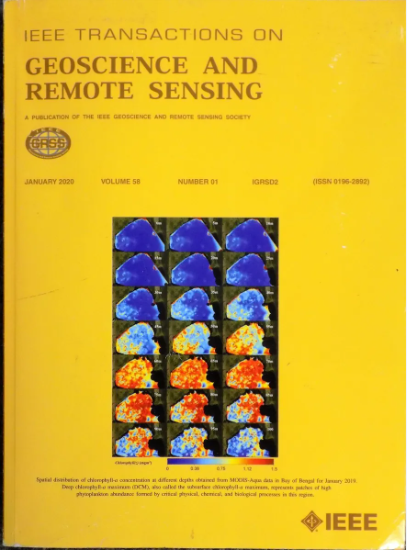利用光谱-空间轴向聚合变换器提升高光谱图像分类的泛化能力
IF 8.6
1区 地球科学
Q1 ENGINEERING, ELECTRICAL & ELECTRONIC
IEEE Transactions on Geoscience and Remote Sensing
Pub Date : 2024-09-18
DOI:10.1109/TGRS.2024.3463187
引用次数: 0
摘要
在高光谱图像分类(HSIC)任务中,最常用的模型验证范式是通过像素随机抽样来划分训练-测试数据集。通过对少量数据进行训练,深度学习模型几乎可以达到完美的准确度。然而,在我们的实验中,我们发现之所以能达到很高的准确率,是因为训练数据集和测试数据集共享了很多信息。在非重叠数据集分区上,性能良好的模型会出现明显的性能下降。为此,我们提出了一种光谱-空间轴向聚合转换器模型,即 SaaFormer,它能在数据集分区之间保持泛化。SaaFormer 采用多层次光谱提取结构,将频谱分割成多个频谱片段,从而保持频谱在整个信道中的波长连续性。对于每个频谱片段,都采用轴向聚合关注机制来挖掘频谱特征,该机制可沿多个频谱轴整合空间特征。多层次光谱提取和轴向聚合关注强调了光谱特征,从而提高了模型的泛化能力。在五个公开数据集上的实验结果表明,我们的模型在随机分区上表现出相当的性能,而在非重叠分区上则明显优于其他方法。此外,SaaFormer 在背景分类方面也表现出色。本文章由计算机程序翻译,如有差异,请以英文原文为准。
Boosting the Generalization Ability for Hyperspectral Image Classification Using Spectral-Spatial Axial Aggregation Transformer
In the hyperspectral image classification (HSIC) task, the most commonly used model validation paradigm is partitioning the training-test dataset through pixelwise random sampling. By training on a small amount of data, the deep learning model can achieve almost perfect accuracy. However, in our experiments, we found that the high accuracy was reached because the training and test datasets share a lot of information. On nonoverlapping dataset partitions, well-performing models suffer significant performance degradation. To this end, we propose a spectral-spatial axial aggregation transformer model, namely, SaaFormer, which preserves generalization across dataset partitions. SaaFormer applies a multilevel spectral extraction structure to segment the spectrum into multiple spectrum clips such that the wavelength continuity of the spectrum across the channel is preserved. For each spectrum clip, the axial aggregation attention mechanism, which integrates spatial features along multiple spectral axes, is applied to mine the spectral characteristic. The multilevel spectral extraction and the axial aggregation attention emphasize spectral characteristics to improve the model generalization. The experimental results on five publicly available datasets demonstrate that our model exhibits comparable performance on the random partition while significantly outperforming other methods on nonoverlapping partitions. Moreover, SaaFormer shows excellent performance on background classification.
求助全文
通过发布文献求助,成功后即可免费获取论文全文。
去求助
来源期刊

IEEE Transactions on Geoscience and Remote Sensing
工程技术-地球化学与地球物理
CiteScore
11.50
自引率
28.00%
发文量
1912
审稿时长
4.0 months
期刊介绍:
IEEE Transactions on Geoscience and Remote Sensing (TGRS) is a monthly publication that focuses on the theory, concepts, and techniques of science and engineering as applied to sensing the land, oceans, atmosphere, and space; and the processing, interpretation, and dissemination of this information.
 求助内容:
求助内容: 应助结果提醒方式:
应助结果提醒方式:


